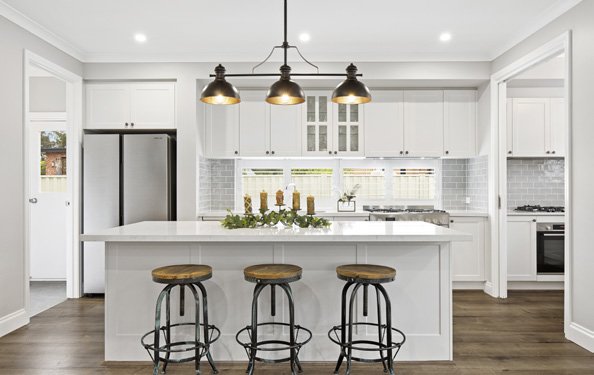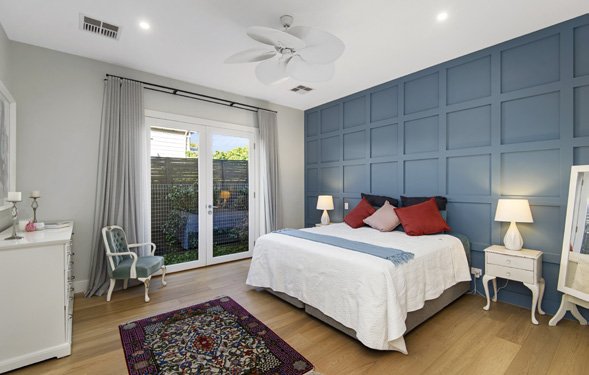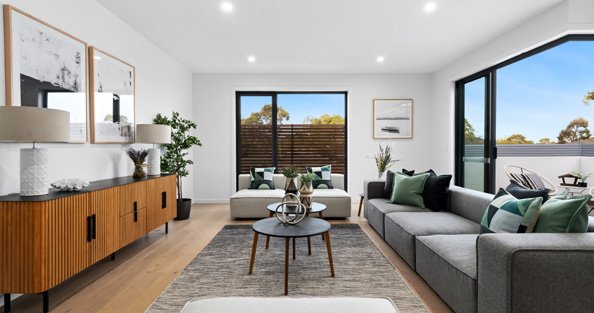
Buyers and sellers are asking how the pandemic and multiple lockdowns in Melbourne are having an impact on prices after a 12-month period in which values have jumped by double-digits.
Everyone wants to know whether the current buoyant mood will continue, whether we'll witness a crash or if values will stabilise to become a 'new normal'.
No one has the crystal ball, 'that burst a long time ago' says Partner Nick Fletcher, and 'we are continuously being surprised in respect of the resilience of the Melbourne market'. We are even seeing economists from respected organisations such as the Commonwealth Bank misreading the market – they predicted a catastrophic fall in prices during the first wave of the pandemic.
When in fact, the opposite has occurred, of course, with buyers and sellers are now legitimately concerned about where we're heading. Is it a good time to buy? Should I put my property up for sale?
The answer to both these queries is "yes" and "yes".

Why? Let's talk about principles. A mountain of academic research warns against trying to "time the market". Attempting to predict when prices could start moving in either direction is fraught with risks that you cannot control.
Instead, it would be best if you focused on what you can control – what's happening in your own life's cycle.
If you're ready to buy a new home, then don't restrain that ambition because of a risk that may or may not exist. A similar scenario plays out for owners. If you want to sell and live elsewhere because you need to move for work, get a larger home or other lifestyle reasons, then make your move.
Right now, the data plays in your favour. Despite the Melbourne lockdown and scaled-down JobKeeper-style support, the market is proving resilient.

This financial year, residential property has risen 13.5% across Australia – the steepest value acceleration since 2004 – with houses (15.6%) out-performing units (6.8%).
Here are a few data points released in mid-July from the leading industry researcher CoreLogic. You'll see a correlation between price rises and the well-known principles of supply and demand, and time-on-market.
- Despite June & July being dominated by the population being in and out of lockdown, every mainland capital city has enjoyed close to double-digit growth. Sydney (16.2%) leads Adelaide (14.4%), Brisbane (14%) and Perth (10.2%) and Melbourne (+8.7%)
- Melbourne's Mornington Peninsula also saw huge jumps in house prices, up by 6.7 per cent during the March quarter and a massive 16.6 per cent during the year, to a median $845,000.
- Houses and units sell faster in Hobart (both 21 days) than anywhere else. By comparison, the speed at which Sydney houses (30 days) and units (39 days) move is on a par with Adelaide (32 and 35 days respectively). All the other capital cities are not far behind in the speed-stakes.
So what's the takeaway? Prices are firm and continue to grow and according to Nicole Powell, Senior Research Analyst at Domain "When you compare Melbourne to Sydney, it is further behind in the property cycle and, for that reason, I think there is more room for further price growth in Melbourne." The lack of supply in the market, combined with record-low mortgage rates, continues to drive values up. If you're a buyer and want to wait til prices drop, you may be waiting a long time. Maybe a lifetime. Make the move that's in your best interests, rather than trying to guess when a market trend might move in your favour.

If you are currently considering buying or selling, this is the ideal time to make contact with your agent, to ensure you are fully informed as you prepare to enter the market
Click Here to get in touch with us today. We look forward to helping you achieve your property goals
by Prue Fletcher in Finance
News and Lifestyle View the Latest Updates
-
Late Summer Landscape Tips: Boost Your Garden’s Appeal for… January 30thAs Summer winds down (or is it up??), it's easy to think that the hard work of maintaining your garden is over.
-
Market Update | 14 & 15 December 2024 December 17thProperty prices have risen throughout the year across the country, though the rate of growth has slowed from the fast...

